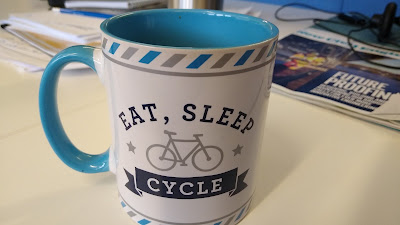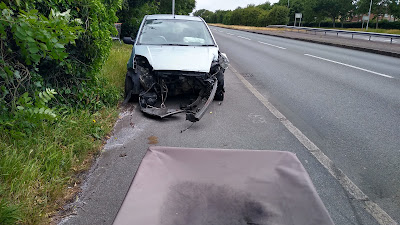Well, for the third year running, I have to reflect on what has been another challenging year, especially as Covid very much remains with us at year end and political leadership is in short supply.
However, I count my personal blessings and any problems I have fall into insignificance where so many people have it so tough. The one thing which has really crystalised in my mind is just how better streets can be a catalyst for a more resilient and egalitarian society, especially where local communities are concerned. This has come from both reading (including some frankly daunting academic study here and there) and being able to immerse myself in the places I have visited and indeed some of the work I have done.
A few weeks ago, this blog turned 9 years old and assuming I carry on at a weekly pace, early summer will see me reach the 500 post mark which I am very much looking forward to reaching.
So, let me wish you a Happy New Year for 2022 and I look forward to continuing my adventures in time and space in the strange universe of highways and transport!
January
I got the year off to a slow start with another look at the work of my civil engineering hero, Sir Joseph Bazalgette, and how I thought that motorisation was our modern disease. I then argued that cargocycles could tame the suburbs, which gave me the opportunity to post lots of lovely photos.
I continued the month with an in-depth look at how advertising boards could be managed, although I would prefer we got rid of them completely. the next post of the month didn't have me travelling very far to have a look at the works outside my front door when the footway was renewed.
The final post of January was the fantastic news that the first shipment of the UK version of the Dutch inritbanden (or entrance kerb) was about to leave Charcon's yard for deployment in a scheme - something I had been chewing over with the manufacturer for a few years.
February
Low Traffic Neighbourhoods and the use of ANPR cameras was the first post of the month. I had a dig through the subject and while I remain of the view that actual physical measures are much better than cameras, if they are used, then they need to come with layouts that actively dissuade non-compliance.
My part of London was hit by snow and I returned back to the subject of winter maintenance and the politics behind it with a look at the role of the development management engineer the week after.
I ended the month with one of my favourite subjects of the year which was the Dutch voorrangsplein junction (above) which is a concept that the UK has kind of tried in places, but never got it right. I think we could make great use of the concept.
March
I continued with a second post on the voorrangsplein concept before posing the idea that driving and parking should be banned everywhere with a case by case justification for something different - the opposite of what we have now.
I then went behind the headlines of the "who is at fault" culture war so beloved by the UK media before taking my first trip of the year to have a look at the Barking Riverside development (above).
April
My occasional "kerb your enthusiasm" series return with a look at why dropped kerbs at pedestrian crossings need to be flush after a shoddy (and still unresolved) crossing installation by my local council.
There was then a two-part post on a trip I made to Thamesmead in southeast London where I had worked in the late 1990s/ early 2000s. The first post looked at some older infrastructure in the area and the second looked at some very modern and in many ways poorer layouts which had been recently built. I then had a look at the anatomy of a road crash in Glasgow where an elderly man caused a collision, but the layout needed to take a fair bit of blame.
May
As the weather started to get warmer, I had the opportunity to stretch my legs and this time, I reported from Birmingham over two posts. First was a look at the A34 Blue Route to the north of the city, followed up by the A38 route which runs out to the southeast (below).
Next was a look at how we can design for lower speeds, which featured plenty of Dutch practice that we could employ in the UK. Following a talk I gave to Cyclox, I posted a detailed look at the five principles of good cycling design, before ending May with a look at what actually makes a Dutch roundabout after seeing North Tynside Council suggesting it was looking at a Dutch-style roundabout (it was very far from it).
June
I had been interested in "diagonal dividers" for ages and so I got out on my bike to find some historic examples around London and I wasn't disappointed. I then had a look at a wonderful scheme at Old Bethnal Green Road in London.
Next was another infrastructure visit to the new roundabout at Drayton Park in London where I had to slap my own wrist for calling it Dutch-ish.
Talking of roundabouts, my last post for June was from the magnificent Dutch roundabout at Fendon Road, Cambridge (above) which, despite the drizzle, was one of my year's highlights.
July
As the summer got underway I got annoyed at how difficult it was to change the status quo with a suggestion that there needed to be a network management plan duty on local authorities to classify streets by intended use which would shape future works. I then had a look at one-way vs two-way cycle tracks and how I would prefer to see them deployed before a quick look at how speed and road design are related.
After a couple of work-related visits to hospitals, I thought about how we might better serve them with cycling.
August
The month started with a look at London's Cycleway 4 which I celebrated as boring because it was no longer unusual, it does an excellent job and doesn't stand out as a "thing" which is what all cycling infrastructure should do. I then had a look at rain gardens which both deal with surface water and can add some life to the street.
A visit to look at the Railton Low Traffic Neighbourhood in Brixton got me out and about again (above) and then I followed with a post which put cycle tracks into tight spaces. The month ended with a post about my family adventures in Dorset for which we had to hire a car with our old one going wrong. We had an interesting few days with a hybrid, although by interesting, I mean faff.
September
In the second post from my holidays, I took a look at a lovely filtering scheme in Poole's port area (below) and then a look around the streets of the seaside town of Seaton.
Back in London, I took a look at a curious road layout at the Olympic Park before swinging by the pop-up Cycleway 9 in Chiswick which is already being made permanent.
October
My first post from October looked at squeezing cycling into pinch points created by bridges where there isn't space for cycle tracks across them, but where we can get creative. I then had a look at one of the most hostile retail parks I have ever visited by cycle before looking at colourful crossings and if they had any point.
Next was a thought piece on the culture war around driving vs active travel and then the month was ended with a deep dive into floating bus stops and the research which has convinced me they are safe. This was my most popular post of the year which got 1,850 visits.
November
As the nights started to draw in, I looked at how we might assess walking environments with an emphasis on the very accessible Walking Route Assessment Tool. I then got out and about again to look at two very different zebra crossings in London.
Next was a look into contraflow cycling on one-way streets where I dusted down the early research to show another concept which has been with us for decades and yet gets controversial for some reason before ending the month with my rediscovery of sketching.
December
The PV² method of rationing pedestrian crossings annoyed be at the start of the month, but I followed it up with a post proposing a better way of prioritising which sites we should tackle.
Finally, my last substantive post of the year was some thoughts on risk, a subject I often return to.


























